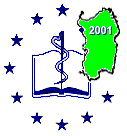 |
Doctors and Librarians - how can
Evidence-Based Medicine promote partnership?
Karla Soares-Weiser (MD, PhD)
|
|||||||
|
Click here to see the ppt presentation |
|
|||||||
 |
Physicians are obligated to make their clinical decisions based on the best available empirical evidence. In reality, however, in order to keep up-to-date with the best published evidence, physicians would need to spend at least 6 to 8 hours a day reading the large amount of relevant medical literature, acquiring and keeping up-to-date literature search skills, and critically appraising the retrieved literature. Taking into consideration the burden that busy physicians already have in their daily clinical practice, it is not likely that evidence-based medicine can be practiced without the partnership and support of medical librarians. On the other hand, in order for this partnership to work it is necessary that both professionals cooperate to: (i) formulate a relevant clinical question; (ii) define a search strategy based on the question that will efficiently retrieve the information; (iii) filtering and critically appraising the retrieved information; (iv) provide a feedback for both partners about the effectiveness of this strategy. In this lecture, a clinical case report requiring a therapeutic decision will be presented, and the steps needed to be taken will be described. In addition, I will make some practical suggestions of how to enable librarians and physicians to effectively collaborate. Case report A 55 years old woman, previously diagnosed with cirrhosis secondary to chronic hepatitis C infection, was admitted to our department of general internal medicine because of fever. She appeared well and there were no focal symptoms or signs of infection. Based on the ascitic leukocyte count our patient was diagnosed with spontaneous bacterial peritonitis (SBP). She denied previous episodes of SBP or prophylactic antibiotic treatment. It was decided that empirical antibiotic treatment should be started. There is, however, a controversy about what is the best available antibiotic therapy for the treatment of this patient and her physician decides to call the consultant infectologist and seek help from the hospital's librarians. Spontaneous Bacterial Peritonitis SBP is a bacterial infection of the ascitic fluid that occurs in the absence of any intra-abdominal, surgically treatable source of infection. In general, SBP occurs in the presence of liver cirrhosis, with a prevalence of 10 to 30% in hospitalised cirrhotic patients with ascites. Dealing with the case A final decision has to be made in the next hours. The consultant infectologist suggested the use of cefotaxime or ofloxacin, but agreed in delay the therapy for 2 hours to allow the physician and the librarian to search for the best available evidence, as he had been too busy to update himself in the past years. The physician and the librarian's goal are to find one or two papers that would help to make a decision based on the best available evidence for the use of antibiotic therapy in spontaneous bacterial peritonitis. Relevant clinical questions
In order to define a search strategy that provides few, useful references, the librarian asked the physician about the type of research design he judges relevant to answer his questions; if he would like any restrictions, such as language, year of publication or research performed only in humans; and if he expects many papers or a handful. They decided that the librarian would filter the search strategy to retrieve randomised controlled trials published since 1980, in humans, but without language restrictions. The librarian initially searches the Medline using the terms described in the table 1. Table 1.: Search strategy
used in Medline
Best available evidence This search strategy located 96 references. After scanning the titles, the librarian identified 15 controlled trials and gave this list to the physician. The physician's next step was to assess the quality of the identified trials. In doing so, he excluded 9 of them and was left with 6 randomised trials that could possibly be relevant to choose the antibiotic therapy for his patient. The published trials, however, were too small and not able to provide a final answer for the physician. Take, for example, the two treatments recommended by the consultant:
The physician was not satisfied with the results of his appraisal. He chose to initiate empirical therapy with cefotaxime, 2g every 8 hours intravenously, but he decided to seek further help from the librarian. He heard about the Cochrane Library and he was wondering if the librarian could help him once more, to search this database. She used a similar strategy, though she did not need to use specific terms for randomised trials, as the Cochrane Library deals mainly with randomised trials and systematic reviews. Her search strategy provided 20 references, two of them not found before and relevant for the physician. One was a systematic review on the topic that confirmed what the physician had found on his previous search. The second was a consensus document prepared by the International Ascites Club and recently published (2000). This consensus recommended cefotaxime (minimum dose 2g/12 hours, minimum duration 5 days), or ofloxacin for patients with uncomplicated SBP. These recommendations are based, according to the consensus document, on the evidence from one randomised, controlled trial (the same that the physician had appraised before) and in expert opinion. Summarising the evidence The physician was bothered by the lack of evidence, and realised that until large, well-conducted, trials provide the necessary information, antibiotic therapy for SBP in patients with cirrhosis would had to be based on clinical experience. However, he learnt some lessons from this experience:
|
|||||||
|
|
|